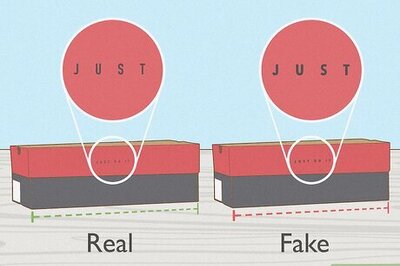
views
New Jersey: Do you think applying the highest-number sunscreen at the beach or pool will spare you skin cancer and premature wrinkles? Probably not, if you're in the sun a lot.
That's because you don't need a sunburn to suffer the effects that can cause various types of skin cancer.
Sunscreens generally do a good job filtering out the ultraviolet rays that cause sunburn - UVB rays. But with sunburn protection, many people get a false sense of security that keeps them under the harsh sun much longer.
This adds to the risk of eventual skin cancer, both deadly melanoma and the more common and less threatening basal and squamous cell cancers.
And most sunscreens don't defend nearly as well against the UVA rays that penetrate deep into the skin and are more likely to cause skin cancer and wrinkles. That's true even for some products labeled 'broad-spectrum UVA/UVB protection'.
Experts say the best protection against UVA is a sunscreen that includes zinc oxide, titanium dioxide or avobenzone. Consumers should also look for those that are water-resistant and have an SPF of 30 or better, indicating strong protection against UVB rays, and apply liberally and often.
More important, limit time in the sun, particularly between 10 am and 4 pm, and cover up by wearing a hat and sunglasses.
Often, product labels are confusing or bear misleading claims. For example, the SPF, or sun protection factor, refers only to defence against the less harmful UVB rays.
"I don't think people understand they're only getting protection from part of the spectrum," says spokeswoman for the American Academy of Dermatology, Dr Sandra Read.
Many sunscreens say little about when to reapply. According to doctors, it should be done at least every two hours and after swimming or sweating.
Also, many sunscreens do not say much about the quantity to be applied, which is roughly two tablespoons for an adult.
"Most people who use an SPF 15 get the protection equivalent to an SPF 5 because they put it on too thinly," says Chairman, American Cancer Society's Skin Cancer Advisory Group, Dr Martin A Weinstock.
While a higher SPF number means more protection, the difference is small. SPF 15 blocks about 93 per cent of UVB rays and SPF 50, often more expensive, blocks about 98 per cent.
Most sunscreens work by reacting chemically with the skin, so they don't start absorbing damaging rays right away and must be applied a half-hour before going outside, something many labels fail to note.
PAGE_BREAK
Still, doctors say people shouldn't abandon sunscreen; they probably should use more.
"Sunscreens do protect against skin cancer," says dermatologist Dr Babar Rao. "We definitely still need sunscreen, even on a cloudy day," he adds.
Research has shown heavy sunscreen use lowers risk of squamous skin cell cancer, which has a high cure rate if caught early. Another study found heavy sunscreen use in children reduces the number of moles, which can turn cancerous later.


















Comments
0 comment